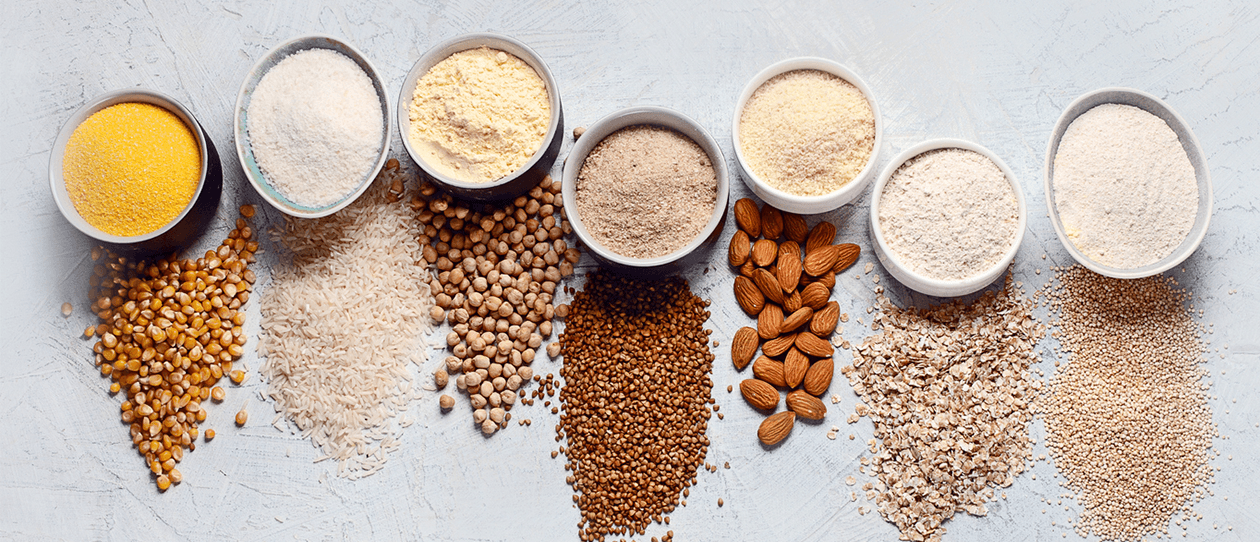
- Health hub/
- Tips & Advice on Improving your Everyday Health/
- Top 5 seeds and their nutritional benefits


What are seeds?
Seeds are what plants grow from. If you are looking to increase plant foods in your diet, seeds are a great option. Don’t be fooled by their size either. Just a tablespoon of seeds can provide a great source of healthy fats, fibre and minerals, including iron, calcium, magnesium and phosphorus. Seeds are a simple and fantastic way of adding extra nutrients to your meals.
Types of seeds
Seeds that we can eat come from vegetables, flowers, or crops grown for a variety of uses such as flax or hemp. Common seeds include hemp seeds, sunflower seeds, chia deeds, poppy seeds, pumpkin seeds, psyllium flax seeds.
Nutritional benefits of seeds
Although there has been limited research on seeds, the nutrient profiles and health benefits are thought to be very similar to those of nuts. Like nuts, they are high in protein, healthy fat and fibre. They contain healthy monounsaturated fats, polyunsaturated fats and many important antioxidants, vitamins B1, B2, B3 and vitamin E and minerals such as magnesium, potassium, calcium, plant iron and zinc.
When consumed as part of a healthy diet, seeds can help reduce blood sugar, cholesterol and blood pressure to support a healthy heart. Just a tablespoon of seeds is packed with nutrients. In chia seeds, for example, you’ll get 2 grams of protein, 4 grams of fibre, and 78 milligrams of calcium. A tablespoon of flaxseed has 2 grams of protein and 3 grams of fibre. Hemp seeds contain only 1 gram of fibre in a tablespoon, but 10 grams of protein.
If you are vegan or vegetarian, nuts and seeds are a good protein substitute for meats, fish and eggs. For example, flaxseeds and chia seeds are also good sources of plant-based omega-3 fatty acids. They are similar to the omega-3 fatty acids that are in fish oil, which have been shown to reduce inflammation and support overall health.
You may need more than 30 grams of nuts and seeds a day to ensure adequate protein. Eat them with vitamin C rich foods to boost your iron absorption.
How to use them
Using the recommended intake guidelines for the seeds you like, sprinkle some into salads, sauces, vegetables, or whole grains such as brown rice or quinoa. You can add them in to cereals, yoghurts, smoothies, stir fries, make a pesto. Combining them with vegetarian meals can boost the nutrient and energy content. Seeds can add extra flavour texture and nutrition to your meals.
Flaxseeds
Also known as linseeds, flaxseeds are a great source of fibre, protein, potassium and omega-3 fats, particularly alpha-linolenic acid (ALA). As the omega-3 fats are contained in its outer shell which humans can’t digest easily, it’s best to eat them ground.
Flaxseeds also contain a number of different polyphenols, especially lignans, which are an important type of antioxidant in the body. According to Harvard University, flaxseed contains 75 to 800 times more lignans than other plant foods. The anti-inflammatory properties of lignans, as well as the fibre and omega-3 fats in flaxseeds, can all help reduce cholesterol and other risk factors for heart disease.
How to incorporate flaxseeds: Add a tablespoon of ground flaxseed to your breakfast cereal, smoothie or yoghurts. They can be substituted for some of the flour in a muffin or bread recipe.
Chia seeds
Like flaxseeds, chia seeds are high in omega 3 fatty acids. Chia seeds can also be turned into a gel and used as a vegan egg substitute for instance in baking cakes. This is because of its high liquid absorption ability and high fibre content.
How to incorporate chia seeds: Chia seed puddings are quite popular and can be made by mixing a quarter cup of seeds in one cup of liquid. Generally almond milk works well. It may take overnight for the seeds to gel up and mixture is no longer watery for the pudding to be ready to eat. As chia seeds themselves don’t have much flavour, it’s helpful to add chopped fruit, nuts, spices or any other toppings.
Pumpkin seeds
Also known as pepitas, they are high in fibre, calories and fat a great source for lots of minerals, including zinc, which is great for immune health.
How to incorporate pumpkin seeds: You can snack on them shelled, unshelled or mixed into vegetables for texture. A popular way of serving them is by roasting them in the oven with seasonings such as salt or turmeric.
Due to its high fibre content, too many in one sitting may cause gas and bloating.
Sesame seeds
In addition to minerals and fibre, sesame seeds are high in selenium, an antioxidant shown to decrease the risk of chronic disease.
How to eat sesame seeds:They are great match with Asian meals, sprinkled as a garnish. You can also bread chicken or eggplant with crushed sesame seeds.
Sunflower seeds
Sunflower seeds have a good amount of minerals, B vitamins and antioxidants like vitamin E and selenium.
How to eat sunflower seeds: If they are shelled, you can bite this off to eat the seed inside. To reduce sodium intake, choose unsalted or lightly salted varieties.
Potential downsides of consuming seeds
Due to their high calorie content, it is ideal to stick to stick to recommended dietary intakes to prevent weight gain. For example, one serve of seeds is 30g and the Australian Dietary Guidelines recommends for women, 2.5 servings of the category of nuts and seeds, or lean meat, poultry, fish, eggs and legumes, beans. For men, it Is 3 servings of this category.




